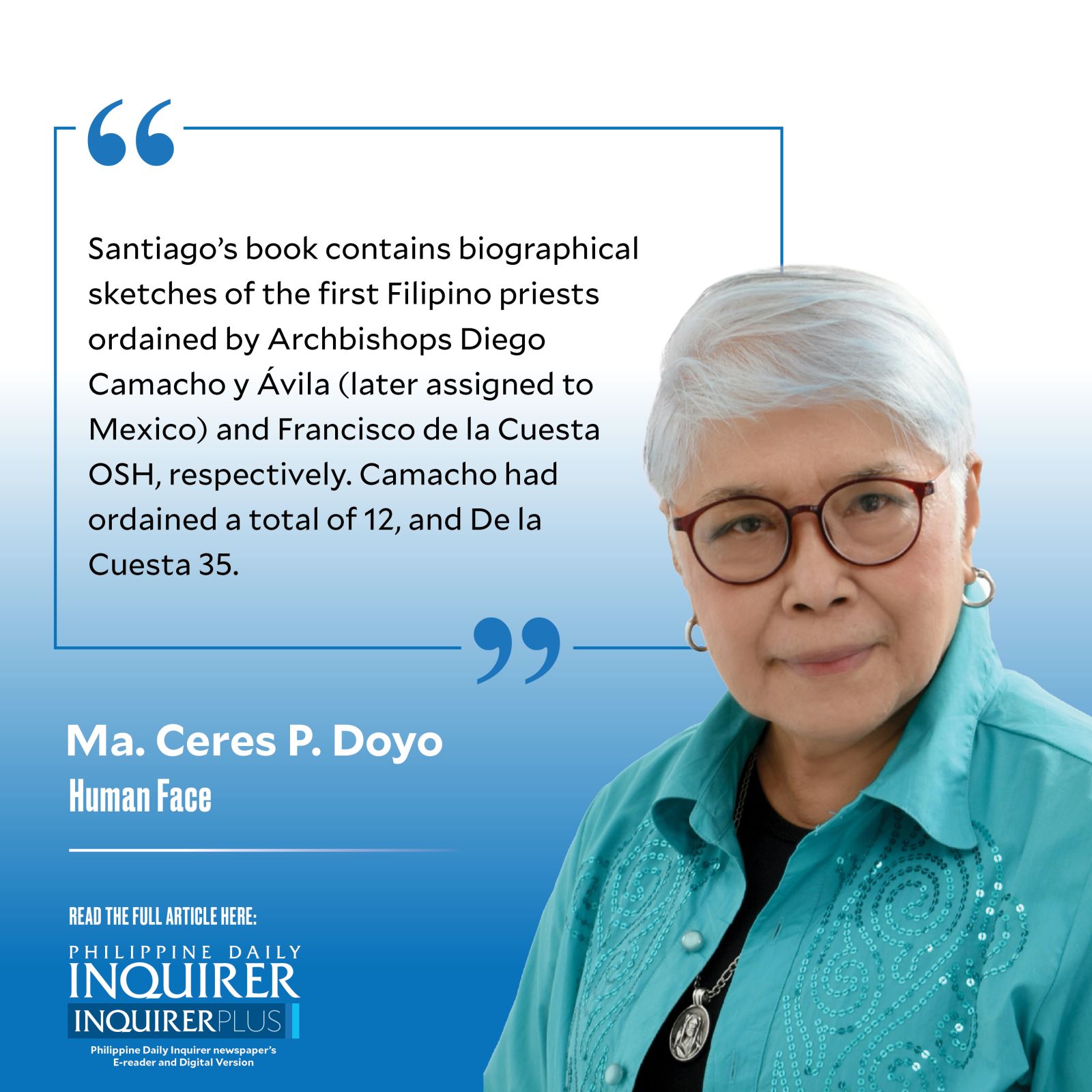A prequel to ‘GomBurZa’
Suddenly I thought I should write a “prequel” to my column last week on the praiseworthy “GomBurZa” movie (Jesuit Communications et al., directed by Pepe Diokno) that won the most awards in the year-end Metro Manila Film Festival.
Historical vignettes on the three Filipino Roman Catholic priests—Mariano Gomes, Jose Burgos, and Jacinto Zamora—whose heads were fed to the garrote in 1872 are surfacing, adding more nuance to their martyrdom in the hands of Spanish colonial authorities. A couple of decades ago, I wrote a review of the book “The Hidden Light: The First Filipino Priests” by Luciano P.R. Santiago, a psychiatrist and writer on the first Filipino religious foundations and priests during the Spanish era.
Article continues after this advertisementSome excerpts from that longer piece that might serve as backgrounder on how the early secular Filipino clergy came to be: On Aug. 4, 1998, the Archdiocese of Manila launched the tercentenary celebration of the ordination of the first Filipino priest (December 1698). It was also Clergy Day, the feast of St. John Marie Vianney, known as the Curé d’Ars and patron of diocesan clergy. The tercentenary theme was “Pilipinong Pari: Biyaya sa Bayan.”
An authority on the first Filipino priests was the late Dr. Luciano P.R. Santiago, a physician who stumbled upon a treasure trove of canonical records while researching his family tree and the history of his hometown, Pasig. The stuff had either been ignored or missed by historians. Wrote he: “I humbly realized that I had stumbled upon a virtual terra incognita in Philippine religious history in which I had to find my own way. For this reason and from the fact that I am a physician and not a professional historian, let alone a church historian, the present work is at best a preliminary study for it raises as many tantalizing questions as the answers it provides.”
Santiago dug some more. The result was his award-winning book published in 1987. Noted historians William Henry Scott and Jesuit Fr. John Schumacher were impressed. Jesuit psychologist Fr. Jaime Bulatao wrote the charming introduction which gave away the human side of these “indio” padres. How could he not help noticing their elaborate signatures? These were used on the cover. The famous Jesuit historian Fr. Horacio de la Costa had earlier written “The Development of the Native Clergy in the Philippines” (1947), but it was Santiago who gave flesh and blood to these faceless, nameless priests as well as to the Spanish ecclesiastical characters of that era. Perhaps his being a psychiatrist helped.
Article continues after this advertisementSantiago was also a diligent historical researcher. From out of the blue, he sent me two of his monographs (on women religious during the Spanish era) that had been published here and in Japan with a note written on prescription paper. I didn’t know then that he had written a book on the first Filipino priests and on a wide range of topics including mythology, genealogy, and literature. Santiago’s book contains biographical sketches of the first Filipino priests ordained by Archbishops Diego Camacho y Ávila (later assigned to Mexico) and Francisco de la Cuesta OSH, respectively. Camacho had ordained a total of 12, and De la Cuesta 35. As there were no portraits available, the priests’ signatures were all that could represent them in the book.
The first known indio priest was Francisco Baluyot from Guagua, Pampanga, who was later assigned to Cebu. Three other Baluyots are on the list of the first priests. If you go down the list, it is evident that the Baluyots were the first Filipino priestly clan serving all four Philippine Sees. The other firsts (Camacho ordinees): Joseph de Ocampo, first Chinese mestizo priest and chaplain; Ignacio Manesay (Fray Ignacio de Sta. Theresa OSA), first Chinese mestizo missionary priest and writer; Alfonso Baluio y Garzia, first indio missionary and chaplain; Blas de Sta. Rosa, first indio pastor; Juan Crisostomo, first Filipino priest-sacristan (also the “black sheep” in this batch), and Juan Managa, first Filipino military and hospital chaplain. Martin Baluyot Panlasigui, first Filipino diocesan secretary; Gregorio Cabalquinto, first Bicolano priest; Pedro Domingo de Leon, coadjutor of Balayan; Pedro Pasqual, first Filipino ecclesiastical notary, and Santiago Garzia, pastor of Malabon (Cavite). Then there were the other 35 De la Cuesta ordinees. Their short biographies also make for interesting reading.
But just as important as these individuals’ priestly lives (origins, social background, studies, pastoral assignments, etc.) were the accounts of how the Spanish archbishop was able to get a royal decree to promote indios to the priesthood, and later to put up the first seminary of San Clemente. And, of course, the political, social, and cultural forces that held sway at that time.
The martyrdom of the Gomburza triumvirate would shake Philippine Christendom two centuries later. “The miracle,” Father Bulatao said in his intro to Santiago’s book, “is that the Philippines became and has remained predominantly Catholic.” That was saying a lot.
Fast forward to present times: The cause-oriented group Gomburza gathers militant members of the clergy, religious congregations (sisters, brothers, and priests), and the laity for active participation in national affairs. It began as part of a movement against the Marcos dictatorship.
—————-
Send feedback to cerespd@gmail.com

















